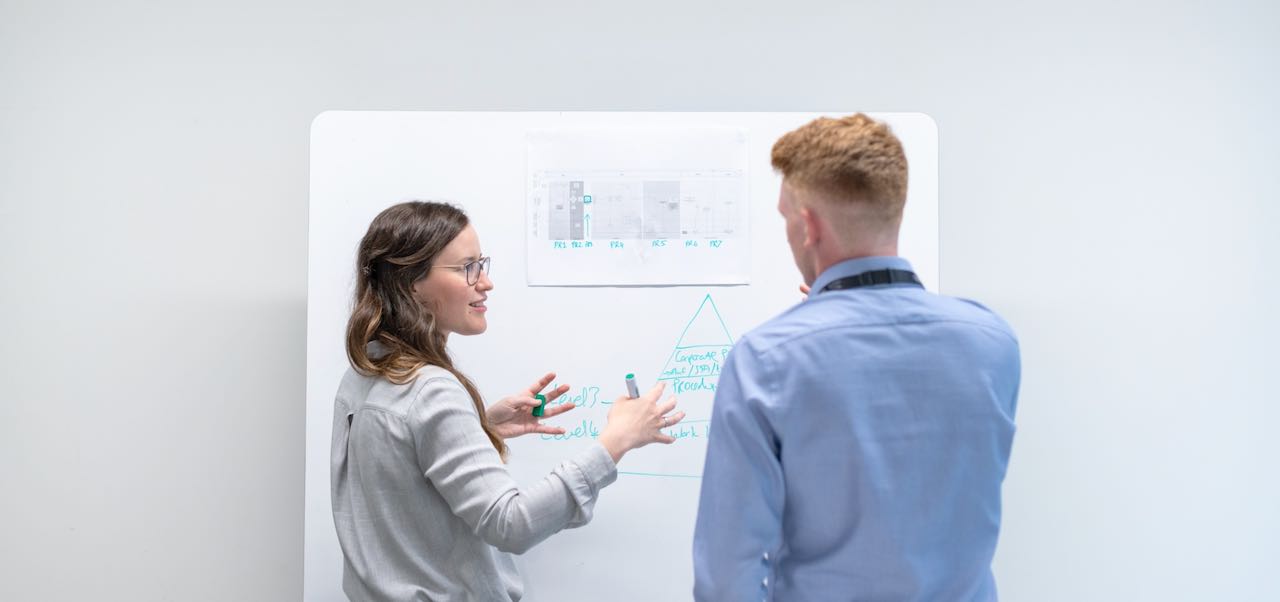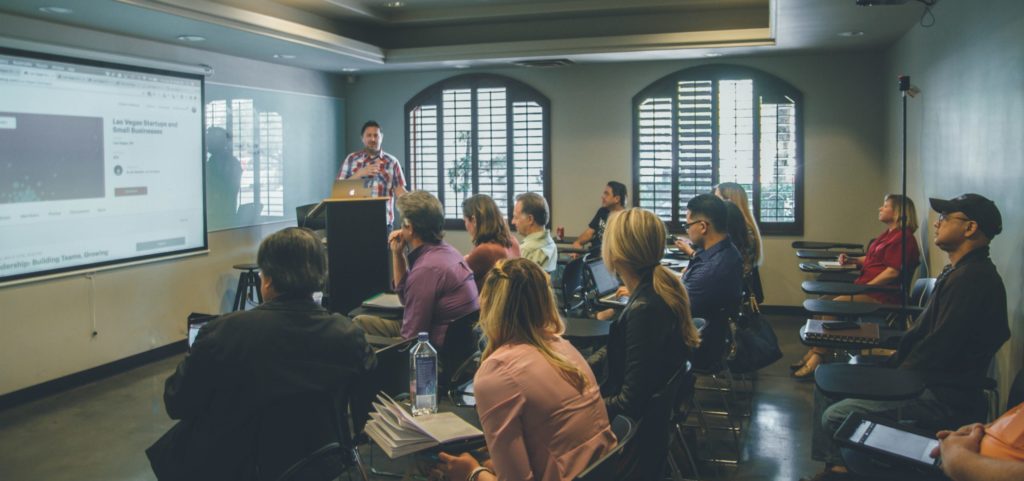Traditional university classes and lectures can last for hours, with student interest and retention waning as time goes on. How can we help these learners stay focused?
Microlearning is the solution. This approach is gaining traction in higher education institutions worldwide thanks to its flexibility, affordability, and fantastic benefits for students.
This article will dive deeper into what microlearning is, how it works, and how you can deliver the experience to your students.
What is microlearning?
Microlearning—also known as microtraining in workplace settings—is a learning method involving short, frequent interactions. Today’s learning institutions increasingly use the approach combined with technology-assisted and mobile learning.
A microlearning course aims to provide learners with bite-sized pieces of content that are easy to consume and comprehend. This model stems from psychological research suggesting that grouping content into small, meaningful groups (known as chunking) improves learning and recall.
Microlearning courses typically last three to five minutes and focus on skill development regarding a single topic. Some common microlearning examples include:
- Reading a short paragraph,
- Writing a short poem,
- Answering rapid-fire quiz questions,
- Viewing flashcards,
- Reading social posts on mobile devices,
- Watching short microlearning videos.
Microlearning content is especially beneficial to students who struggle with distractions or lose focus during long teaching sessions. A short and snappy approach helps these learners stay on track and more easily retain information.
When applying microlearning, educators can adapt each small learning unit to learners’ individual ability levels, allowing them to work at their own pace. This is one of the approach’s major benefits.
Why is microlearning important?
Through influences like social media and the broader internet, today’s learners have grown accustomed to consuming short bursts of information. Microlearning is an effective way to tap into this change and keep modern students focused and engaged.
According to a 2021 study published in the Asian Association of Open Universities Journal, microlearning inspired significant increases in learner satisfaction, engagement, and performance.
The study also highlights the barriers learners face in today’s ‘massified’ higher education environment and how microlearning aims to bridge this gap.
The benefits of microlearning for students
Microlearning offers students an enormous range of benefits, from keeping them engaged to encouraging self-paced learning. We’ll go into detail about some key advantages now.
Increases engagement
Student engagement can be intrinsic or extrinsic. We can further divide these classes into four categories: cognitive, emotional, volitional, and physical. Let’s break down these categories now.
Cognitive
Definition: Describes a student’s mental load and dedication to the current subject matter.
Microlearning outcome: The student easily dedicates mental energy to the short task without feeling drained.
Emotional
Definition: Describes how the student connects to and how they feel about a subject matter.
Microlearning outcome: The student feels strongly connected to the meaningful topic.
Volitional
Definition: Describes a student’s motivation for learning about a subject matter.
Microlearning outcome: The student is motivated to learn about a subject relevant to their interests and skills.
Physical
Definition: Describes a student’s physical participation in the activity and how this enhances the cognitive and emotional aspects of their learning.
Microlearning outcome: The student easily stays on-task and physically focused over the short period.
Microlearning must take a broad-spectrum approach, tapping into each category for microlearning to work effectively. The method works especially well in combination with other teaching approaches like project-based and experiential learning.
Improves knowledge retention
One major benefit of microlearning is its ability to significantly improve knowledge retention. There are a few reasons why the method works so well.
Firstly, breaking lessons down into bite-sized courses prevents cognitive fatigue—a type of exhaustion or tiredness that develops when a student’s mental energy wanes. Mental fatigue can prevent knowledge from passing from short-term into long-term memory, so the student absorbs less information.
With microlearning, students have time to stop and process information before moving to the next task, easing mental load and promoting stronger knowledge retention.
Microlearning also improves retention through spaced repetition—an evidence-based technique based on research showing that our brains retain information more easily when introducing intervals between study sessions.
We can tap into this technique and boost retention by presenting information in small bits with gaps in-between.
Supports self-paced learning
All students have unique individual learning styles and study preferences. Because of microlearning’s flexible nature and low time commitment, the approach facilities self-guided and self-paced learning.
This way, learners can spend more time on subjects they struggle with while breezing through those they excel in.
Personalises learning experiences
According to a 2014 Taylor & Francis study, personalised or differentiated teaching is key for keeping students engaged. It’s all about tailoring learning experiences to individual student learning styles.
Because there are so many ways to implement microlearning experiences in the classroom, it’s easy to create personalised experiences for each learner.
Let’s use educational theorist David Kolb’s learning style model to form an example. A student with a Converging learning style, which focuses on abstract and interactive problem-solving, would benefit from quick, gamified learning tasks like maths quizzes or educational games.
Makes learning flexible and accessible
Today’s students are busier than ever, taking on multiple responsibilities, including travel, work, and family commitments. Microlearning makes it easy for these learners to manage their time effectively.
Because microlearning is also easy to deliver online, it’s more accessible than traditional in-person training or on-campus education. Students can access lessons from home and complete them at any time, working smoothly around their busy schedules.
Saves time and boosts productivity
Because of microlearning’s minimal time commitment, it’s a fantastic way to boost productivity for teachers and students alike. Quick-fire teaching techniques can be just as effective as hour-long lectures or lessons—without the enormous time and resource commitment.
Is microlearning effective?
So, we understand the benefits of microlearning, but is it effective in real-world settings?
Well, according to a recent review by Federation University and Deakin University, the answer is a resounding yes!
The review, which reflected on microlearning research across six educational databases, found that microlearning is beneficial for objective and subjective student outcomes. The approach improved academic performance, participation, learning motivation, and student experience.
A 2018 study published in the International Journal of Education Research Review supports this suggestion. Among a class of Information Technology students, microlearning significantly improved engagement and long-term memory retention.
Microlearning has also found success in the workplace as an increasingly popular corporate training approach. Exposing students to the approach now will prepare graduates for similar learning experiences in the working world.
How to implement microlearning in a higher education setting
Microlearning is beneficial and easy to implement across degree specialisations. Here are some effective ideas to use in your classroom.
Gamified learning
Gamified learning is an instructional strategy that uses game mechanics and design principles to make learning more engaging and fun. Educators can apply the approach in many ways, including:
- Rewarding points and badges for completing tasks,
- Creating questions and missions for students to complete,
- Using interactive educational games.
Many games are fast-paced and engaging, making them a great method for delivering microlearning experiences.
Infographics
An infographic is a visual representation of information, including images, charts, and diagrams. They’re a fantastic tool for presenting complex information in a compact and easily digestible format.
Infographics are great for microlearning because students can scan over the graphic in minutes, absorbing vital information such as dates and statistics. The approach is especially effective for visual learners.
Social media
Naturally, social media and microlearning go hand in hand. From Twitter’s 280-character post limit to TikTok’s focus on short-form video content, the social sphere is about sharing information in quick bites.
Social media, then, is a great way to connect with students on a level they understand—tying into their intrinsic motivation. For example, YouTube is great for curating and creating video content to share with students, while TED-Ed is ideal for sharing short, animated lessons.
Social media is also amazing for—you guessed it—being social! It’s a powerful tool for keeping students connected and encouraging short, focused contributions.
Of course, it’s essential to ensure these social microlearning experiences integrate well with your class’s current learning objectives and work towards a specific learning outcome. The content you share should clearly relate to class content, have real-world relevance, and hold genuine meaning for each student.
Challenges of microlearning
A recent study by the University of Strathclyde, Glasgow, proposed a microlearning model designed to enhance and sustain student motivation and engagement. Researchers based the model on the Self-Determination Theory (SDT) of motivation, which suggests people are motivated to grow through certain innate needs.
According to the SDT, the three core needs for enhancing motivation are competence, relatedness, and autonomy. To build an effective microlearning strategy, educators must ensure these three needs are met.
The simplest way to achieve this goal is to collaborate with students on microlearning activities, allowing them to guide their own experiences. This way, students can select topics and enjoy learning skills relevant to their interests.
How Practera can help
Practera’s innovative experiential learning platform and project-based learning managed services makes delivering effective microlearning activities easier than ever.
Practera supports microlearning experiences through its powerful digital tools, including chat-based collaboration software, quick content authoring, and gamification features. With so many options, it’s easy to mix and match activities that tie into every student’s unique learning style. You can further personalise each student’s experience with our custom workflow tools and adaptive learning paths—and keep them informed and engaged with our mobile app’s push notification features.
We also support helping your students gain real-world microlearning experiences with our managed services, helping you connect with global organisations to deliver effective programs with relevant projects that best suit your needs.
To get started with Practera, start a conversation with our team today or download our comprehensive white paper to find out more.




